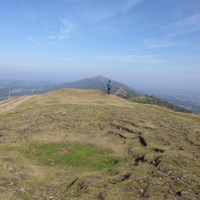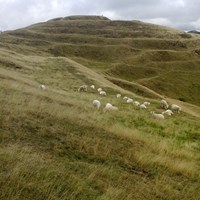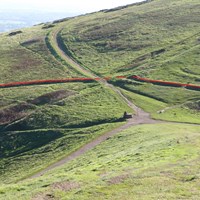With its dramatic landscape, great views and natural spring water, the Malverns have long been occupied by man. It is man’s activities eking out a living combined with nature that have created this cherished cultural landscape we all enjoy.
Cultural Heritage
The hilltops were a popular site evidenced by the archaeological remains from many different time periods. The most iconic of which are the two large hillforts – Midsummer Hill (owned by the National Trust) and, one of the best examples of a hillfort in Britain - British Camp.
Other archaeology includes the Shire Ditch, burial mounds and drover’s tracks. Many of these features are legally protected as ‘Scheduled Monuments’.
In more recent times the Hills became a recreation destination. The Edwardians and Victorians established a network of broad paths and carriageways together with developing St Ann’s Well and follies such as Clutters Cave.
The archaeology is easily destroyed and irreplaceable. We manage these features carefully to keep them visible to the public yet protected from harm.
Conservation Management Plan – British Camp (PDF)
‘Malvern Hills – an ancient landscape’ by Historic England (external link)
Hidden enclosures brought to light
The Malvern Hills are a rich tapestry of history and culture as humans have shaped this landscape over thousands of years.
Although some parts of this history are well known, British Camp Hill Fort, Midsummer Hill Fort and the Shire Ditch, little was known about some of the more recent banks and ditches that cross the northern hills. A historical geographer and building historian, George Demidowicz has surveyed and researched these features which we now know are 17th Century banks and ditches built to enclose hill land as it was sold off.
To find out more about the reasons for these enclosures and where to find them on your visit, why not take a look at the historical guide by the Malvern Hills Area of Outstanding Natural Beauty and historian George Demidowicz.
Banks and Ditches on the Northern Malvern Hills (PDF)
Malvern Hills Area of Outstanding Natural Beauty (external link)



